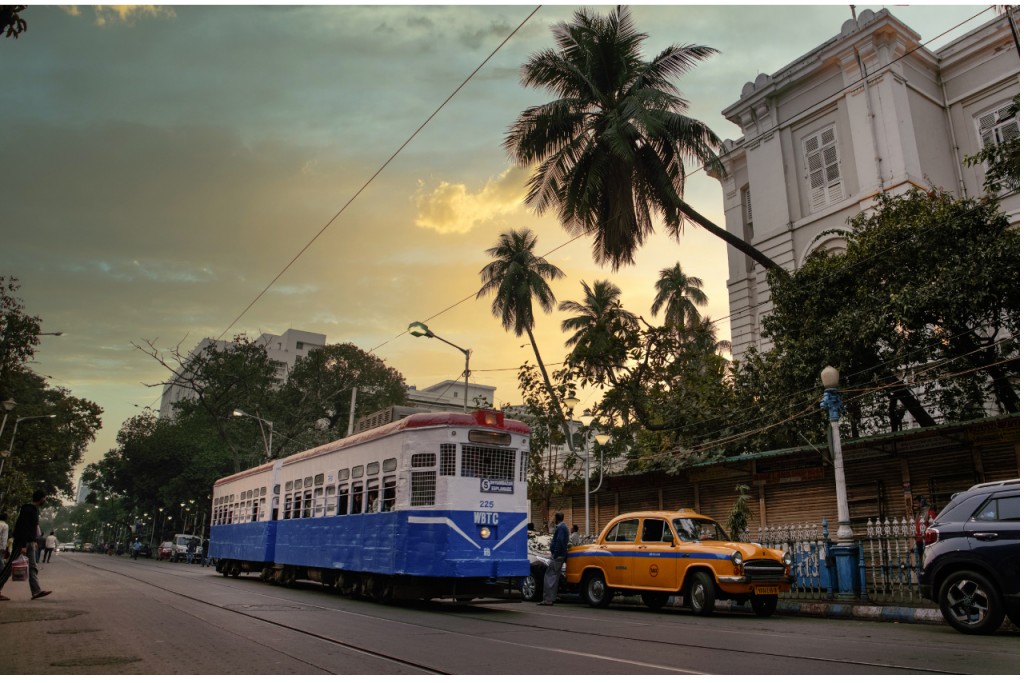Kolkata, the City of Joy, has long been synonymous with its iconic tram system, a unique mode of transportation that has captured the hearts of its residents and visitors alike. As the last Indian city to operate trams, Kolkata is now poised to bid farewell to this beloved service, marking the end of an era that has lasted for 150 years. The West Bengal government has decided to discontinue most tram routes, citing increasing traffic congestion as the primary reason. While the historic stretch between Maidan and Esplanade will remain operational, the decision has left many locals and tram enthusiasts disheartened.
A Journey Through History
Did you know that trams were introduced to Kolkata in 1873 as horse-drawn carriages? Over the decades, they evolved into electric trams, becoming integral to the city’s public transportation system. For generations, residents have associated trams with Kolkata’s identity, making their potential discontinuation a significant loss for the city.
As the government explains, Kolkata’s narrow streets account for only six percent of the city’s surface area, and the increasing number of vehicles has made it challenging to accommodate the slow-moving trams. Transport Minister Snehasis Chakraborty emphasized that the decision was driven by practical concerns, as traffic congestion continues to plague the city, especially during peak hours.
Also Read: पैरासिटामोल समेत 53 दवाएं क्वालिटी चेक में फेल: CDSCO की रिपोर्ट
The Emotional Impact
The announcement of discontinuing most tram routes has sparked disappointment and protests among locals. For many, trams symbolize Kolkata’s rich cultural legacy and heritage. Residents argue that losing this iconic mode of transport would mean losing a vital part of the city’s character. The nostalgic connection to the trams runs deep, as they have become a cherished part of daily life for countless people.
While the government plans to maintain the heritage route from Maidan to Esplanade, allowing locals and tourists to experience the historical charm of the trams, many wonder if this is merely a gradual phasing out of the service. The heritage tram line is touted to offer a pleasant and eco-friendly travel experience, but it still leaves many yearning for the full experience of riding trams throughout the city.
A Cultural Symbol
Kolkata’s trams have transcended their function as a mode of transportation; they are a living representation of the city’s history and culture. Artists, writers, and filmmakers have drawn inspiration from these vibrant vehicles, which weave through the urban landscape, connecting communities and memories. The clatter of tram wheels, the scent of street food wafting by, and the lively chatter of passengers have created an atmosphere that is distinctly Kolkata.
The impending discontinuation of many tram routes raises questions about the future of this cultural symbol. While practical considerations are paramount, the emotional attachment to trams cannot be understated. The voices of the residents echo the sentiment that losing the trams means losing a piece of Kolkata’s identity.
What Lies Ahead?
As the matter currently rests under consideration by the Calcutta High Court, the fate of Kolkata’s trams remains uncertain. The preservation of the heritage stretch between Maidan and Esplanade may provide some solace, but for many, it’s not enough to offset the larger loss.
In a rapidly changing urban landscape, the trams are a reminder of the city’s rich history and the need to cherish our heritage amidst modernization. While practical challenges exist, the tram system’s contribution to Kolkata’s cultural fabric should not be overlooked.
As Kolkata navigates this transition, it’s essential for the community to advocate for the preservation of its history and identity, ensuring that future generations can experience the joy of riding trams through the heart of this vibrant city. For now, tram enthusiasts can still hop aboard and cherish the nostalgic charm that remains, but they must also prepare to say goodbye to a mode of transport that has been a beloved part of Kolkata’s soul for over a century.
Also Read: Shankh Air: New Domestic Carrier in Indian Aviation











